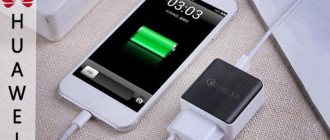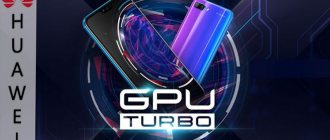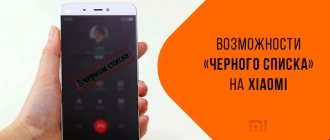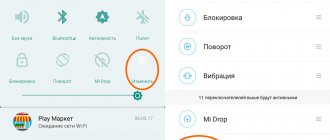Updated 08/30/2020. Each component of a smartphone goes through a stage of progress from year to year. Now is the time to optimize the performance of batteries and chargers. It seemed that in this case it was very difficult to come up with something new. Nevertheless, today device manufacturers are constantly improving the technology - Xiaomi fast charging saves owners of modern gadgets from the redmi and mi line from nervous waiting, thereby allowing them to use the device more often.
What is fast charging and how does it work?
The fast charging technology used in Xiaomi smartphones is Qualcomm Quick Charge. It is based on using more current power than usual. As you know from a physics course, the power of an electric current is the current strength multiplied by the voltage. If you increase the power, the battery will fill with energy faster.
Accordingly, it is possible to increase power by increasing one of these multipliers.
Manufacturers use different ways to increase charging speed:
- USB type-c cable introduces less losses during the process, compared to the usual micro-usb;
- An increase in the number of controllers and sensors that convert high voltage levels and monitor the condition of the battery and temperature (reducing the current when heating is high);
- Special rechargeable batteries consisting of 3 elements;
- Powerful power adapters that regulate power.
| Quick Charge Version | Maximum power | Voltage |
| 1.0 | 10 W | 5 V |
| 2.0 | 18 W | 5V/9V/12V/20V |
| 3.0 | 18 W | 3.2 V - 20 V |
| 4.0 | 28 W | 5 V - 24 V |
| 5.0 | 100 W | 3.3 - 20 V |
Each processor manufacturer (SoC, system-on-chip) has its own unique solution to ensure the required temperature conditions of the power supply elements, as well as maintaining current and voltage values within specified limits.
Most manufacturers have their own technology and name for fast charging:
- Samsung - Super Fast Charging;
- Huawei - Huawei SuperCharge;
- Apple - Power Delivery (USB-PD);
- Lenovo, Motorola - TurboPower;
- Oppo - VOOC Flash Charging;
- OnePlus - Dash Charge;
- Meizu - mCharge.
Some standards are based on others with minor modifications and may be backward compatible.
Principle of operation
Xiaomi Quick Charge technology works by increasing the current or voltage. The process is regulated by a special protection system supported by the Qualcomm Snapdragon chipset. Starting with the third generation of Quick Charge, the processor also began to receive information about the state of the battery. This allowed the chipset to independently determine the supplied current and voltage. The latest generation of technology has 12 protection systems against overheating and power surges. In general, with fast charging, the process is carried out unevenly and is divided into certain intervals.
Fast charging Xiaomi Quick Charge.
How to enable fast charging on Xiaomi
There is no need to separately activate Quick Charge on Xiaomi smartphones. A simple connection to an outlet using accessories that support QC (not always included) is sufficient.
If everything worked out, then the lightning icon in a circle will proudly display on the screen, which informs the user about the fast charging process.
To be sure that this function works, you can simply time the charging time. According to the manufacturer, QC version 5 is capable of charging half a 4500 mAh (milliamp-hour) battery in 15-20 minutes.
Power supplies with Quick charge are backwards compatible - newer models of chargers that support Quick Charge 5.0 can be connected to not-so-new smartphones that only support the first version without any problems.
Quick Charge technology compatibility
Which Xiaomi smartphones support the function
Depending on the technology generation, the following Xiaomi phones received Quick Charge support:
| Quick Charge technology version | Smartphone model |
| 1.0 | Redmi 2 (Note. Prime, Pro) |
| 2.0 | Mi 3 (Note, Note Pro), Mi 4 (4i, 4c), Mi 5 (Plus), Redmi Note 5 |
| 3.0 | Mi Mix, Mi Mix 2, Mi Note 2 and 3, Mi Max, Mi Max 2, Mi 5s Plus, Mi 6 and 7, Redmi 4x |
| 4.0 | Mi 8, Mi A2, Mi Mix 3, Pocophone F1, Redmi K20 Pro, Redmi Note 7 and 9 (Standard, Pro), Mi 6x, Mi 10 all versions |
| 5.0 | Mi 10 Ultra and future flagship smartphones |
Is fast charging harmful and how to save your battery?
There is an opinion among users that using an accelerated battery replenishment cycle leads to rapid wear. To be fair, it is worth noting that the battery will wear out a little faster, but not by much.
Manufacturers and scientists are constantly improving technology, thereby reducing heating and introducing new algorithms for gentle charging.
Much more damage to the battery is caused by cheap, low-quality accessories, using a smartphone while charging, long-term storage at a low charge level (below 10%) and prolonged exposure to cold or open sun.
And then, what difference does it make how quickly your battery can “disappear” if in a couple of years your phone inevitably becomes obsolete and requires replacement.
Xiaomi does not recommend using the QC adapter with conventional devices where there is no fast charging icon on the screen. In this case, an increased voltage or current at the output will really ruin your gadget and it will stop turning on.
A warm and thick case can pose a significant danger to the gadget, due to which the temperature of the device can rise above critical values.
Does fast charging depend on the USB cable?
Of course, the USB cable affects the charging process, regardless of the selected Xiaomi model and Quick Charge generation.
When the cable is intact and undamaged, the process of replenishing energy occurs without hitches or problems. If the USB is broken and shorts periodically, you should immediately replace the charging component. Otherwise, after 3-4 months you will have to change the battery or buy a new phone.
It is advisable to use a complete cable or from well-known companies, since new versions of QC use INOV (Intelligent Negotiation for Optimum Voltage) technology. This function ensures communication between the battery and the adapter, allowing them to “communicate”, thereby determining the optimal voltage for charging. Otherwise, the technology may not work or harm the battery.
In any case, it is worth periodically checking all elements that affect the Quick Charge process.
Possible problems
Despite the fact that Quick Charge technology has been around for more than 7 years, sometimes interruptions and malfunctions occur in its operation. Most often, the function does not work due to damage to the cable or power supply. In this case, it is necessary to replace the failed part by purchasing a new one, preferably an original one. Also, Quick Charge may not function due to a software failure of the module, which is directly connected to the processor.
It is not recommended to repair the phone yourself, as there is a high probability of damaging the internal contacts during disassembly.
If Quick Charge does not start after updating the system, rolling back to an older version or reinstalling the firmware will help. In this case, you need to use only official versions from the Xiaomi website. The last of the most common problems is connecting via a non-original USB cable or power supply. In this case, you need to buy accessories that are voltage supported.
Security Xiaomi Mi Quick Charge
Xiaomi developers have taken care of the safe operation of devices: the smartphone contains a whole structure of microcircuits that monitor the battery condition and temperature indicators during charging. When a power surge occurs and the battery overheats, the chip is automatically activated and cuts off the power supply. This prevents undesirable consequences: damage and fire of the battery.
The manufacturer Xiaomi guarantees several levels of protection:
- Temperature control mechanism for lithium-ion batteries (prevents overheating).
- Short circuit protection : The latest Quick Charge models are relatively resistant to electrical current surges.
- Reset mechanism : charging stops working in unstable conditions.
- Surge Protection : The latest generation of Quick Charge's OVP circuitry protects against the harmful effects of power surges.
- Protection against incorrect installation : the charging process stops if the device is in an unstable position.
- Overvoltage protection : The charger can monitor the voltage, and turns off when the maximum limit is exceeded.
Will there be consequences?
We have repeatedly heard concerns from smartphone owners that the Quick Charge function literally destroys the smartphone's battery, and that it is especially dangerous to charge when the phone is turned off. We hasten to assure you that this is not the case. A huge number of scientists worked on the development of this technology. Several tens of hundreds of different types of tests were carried out in laboratories, as a result of which Quick Charge was created in the form in which we have it today.
Many Russian and foreign research publications are already talking about the fact that soon mobile devices will be charged almost instantly from 0% to 100%. Believing this or not is a personal matter for everyone, but it is still unlikely that such an amount of work is aimed specifically at deliberately destroying the batteries of your smartphones. Therefore, you can easily charge your devices without fear of premature battery failure. Enjoy it without worrying about anything.
Features of fast charging and prospects
Every year we see more and more complex mechanisms that allow us to fill a battery in just a few minutes.
Quick Charge 3.0 dynamically boosts the voltage from 3.2V to 20V, although the peak power for both standards is 18W. This means that theoretically, phones with a capacity of 3,500 to 4,500 mAh can reach around 80 percent charge in just 35 minutes.
Quick Charge 4+ narrows the voltage range and increases the current. Quick Charge 4+ devices use USB-C ports and are compatible with USB Power Delivery. There's also a second power management chip that delivers up to 28W of power without overheating. For comparison, Xiaomi Mi 6X charges 50% in 18 minutes.
In 2021, the next generation from Qualcomm is presented - Quick Charge 5 . This technology uses 2 new power management integrated circuits - SMB 1396 and SMB1398, which support one, two and three cell batteries. They can handle voltages greater than 20V for wired and wireless power supplies. The end result of the achievements is charging a 4500 mAh battery in 5 minutes to 50%, and after another 10 minutes to 100%.
In addition to speed, the technology itself has become 10 °C “cooler”; when connecting, it will not be the certification of the equipment that will be checked, but the actual size and condition of the battery will be analyzed.
The new technology will be available to devices with Snapdragon 865 and 865+ chips, and the first of them will be a gadget from Xiaomi - Mi 10 Ultra.
Comparison of Xiaomi Redmi K30 and Mi 9T Pro: which is better? | NR
We compared 2 smartphones: the Xiaomi Redmi K30, released on December 10, 2021, with a 6.67″ screen and a Qualcomm Snapdragon 730G chip, against the 6.39-inch Xiaomi Mi 9T Pro, which has a Qualcomm Snapdragon 855 processor and was released 7 months earlier. Below you will find the characteristics, tests, strengths and weaknesses of each of the gadgets.
Reasons to choose Xiaomi Redmi K30:
- The smartphone is 7 months newer;
- Display refresh rate – 120 Hz;
- Availability of a slot for MicroSD memory cards;
- Newer OS: Android 10 vs 9;
- It is equipped with a 500 mAh more capacious battery – 4500 versus 4000 mAh.
Reasons to choose Xiaomi Mi 9T Pro:
- The camera has a 2x optical zoom;
- Shows 73% better performance in the AnTuTu benchmark;
- AMOLED screen (versus IPS LCD from a competitor);
- Weighs 17 grams less.
Characteristics
Comparison table of technical characteristics of Xiaomi Redmi K30 and Xiaomi Mi 9T Pro
| Type | IPS LCD | AMOLED |
| Size | 6.67 inches | 6.39 inches |
| Permission | 1080 x 2400 pixels | 1080 x 2340 pixels |
| Aspect Ratio | 20:9 | 19.5:9 |
| Pixel Density | 395 dpi | 403 dpi |
| Update frequency | 120 Hz | 60 Hz |
| Protection | Corning Gorilla Glass 5 | Corning Gorilla Glass 5 |
| Screen to body ratio | 84.8% | 86.1% |
| Peculiarities | - Oleophobic coating - Blue radiation protection - HDR10 | — Always-On Display color display — HDR10 — Dark mode — Contrast ratio: 60000:1 — Color gamut: NTSC 103.8% - TÜV Rheinland® |
Why does not it work
Some users notice that although their smartphone is in the “favorites” list, for some reason it does not turn on fast charging. Let's try to figure it out, in our experience there are several reasons for this problem:
- A non-original (low quality) charger or cable is used. The charger must have special markings indicating the power (Output);
- Software not updated. Not all previous Xiaomi models (for example, Redmi 3s prime) supported Quick Charge technology right out of the box. For it to work, you need to update to the latest firmware;
- Active use of the smartphone while charging greatly provokes heating, which is why the system turns off accelerated charging (disappears from time to time). Similar problems are observed due to the location of the device under a pillow or with a thick cover;
- Firmware defect or glitch. A rare case, the glitch is solved by a full reset or flashing via miflash. A marriage can only be detected in the SC.
We hope you found this article helpful. If you have experience solving any problem, be sure to share it in the comments.










